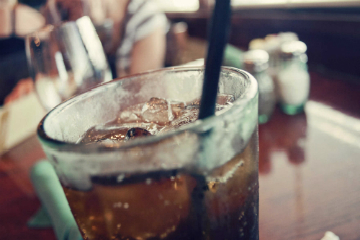Sugar levels in food
The World Health Organization recommends that added sugar (in other words, extra sugar that's put into food products during processing) should contribute no more than 10% to a daily diet. Depending on size, age and physical activity, this is equivalent to a maximum of approximately 70 grams for men and 50 grams for women. 
With as much as 35 grams of sugar in a single can of cooldrink, many South Africans consume considerably more added sugar than that every day.
What is sugar?
Sugar is a simple carbohydrate that comes in many different forms. In its simplest form it’s called a monosaccharide and includes:
- Glucose (occurs naturally in fruits and plant juices)
- Fructose (occurs naturally in fruits, some root vegetables, cane sugar and honey)
- Galactose (combines with glucose to form lactose)
Sugar and your health
Too much sugar can make you gain weight, which increases your risk of chronic diseases like type 2 diabetes, heart disease and stroke. Sugar is found in an enormous amount of food products from flavoured water to low fat yoghurts, tomato sauce and cereal.
Many of these items are marketed as low-fat or high-energy and people have no idea what they are actually consuming. High amounts of sugar are also found in:
- Peanut butter
- Salad dressings
- Canned vegetables
- Canned soup
- ‘Health’ bars
- Bread
- Fast foods
South Africa's new sugar tax
 The national Minister of Finance, Pravin Gordhan, announced in the February 2016 Budget a decision to introduce a tax on sugar-sweetened beverages (SSBs) with effect from 1 April 2017 to help reduce excessive sugar intake in South Africa.
The national Minister of Finance, Pravin Gordhan, announced in the February 2016 Budget a decision to introduce a tax on sugar-sweetened beverages (SSBs) with effect from 1 April 2017 to help reduce excessive sugar intake in South Africa.
SSBs include the following: still and carbonated soft drinks, fruit juices, sports drinks, energy drinks and vitamin waters, sweetened ice tea, lemonade, and cordials. Milk products and 100% fruit juices will, however, not be taxed extra.
The rate of tax will be at 2.3c for every gram of sugar. The tax, which would make South Africa one of the first countries to introduce this type of tax on sugar, and would add about 20% to the price of a can of soft drink.
The sugar tax is designed to change behaviour, to help people to make healthier choices that will help curb the high incidence of sugar-related diseases such as obesity and diabetes which are increasing at a rapid rate in South Africa, placing a burden on both the health system and the economy.
Know what you eat and drink
According to South African law, all food products that list nutritional information must also indicate the amount of sugar in the product.
Reading and understanding food labels is essential when trying to keep to a healthy, balanced diet, as we live in times when more and more foods are prepared and pre-packaged.
Although it’s now a legal requirement that all food labels in South Africa must have certain mandatory information, food labels can be a bit confusing, making it difficult to know whether you're getting all the essential nutrients and sticking to daily limits of others, such as salt and fats.
Despite the advantage the information on food labels give consumers to assist in food choices, a lack of understanding of the information might cause consumers to ignore the information. Information normally included on food labels are:

- Ingredients list: Each ingredient is listed in descending order of predominance. This means that the first ingredient on the list is what the product mainly contains, and at the end of the list are the ingredients that are present in the least amounts.
- Calories: Indicates the amount of energy you receive from a serving, or per 100g. It’s measured in calories (kcal), or kilojoules (kJ).
- Fats: Some food labels divide fat content into saturated, monounsaturated, polyunsaturated, and trans fat. Monounsaturated and polyunsaturated fats provide us with the essential fatty acids that the body needs. Remember to limit foods which are high in saturated fat or trans fats.
- Sodium: Salt is often mentioned as sodium on food labels.
- Carbohydrates / Sugars: Simple carbohydrates are often listed on food labels as "glycaemic carbohydrates of which sugars". These include sugars which have been added, and also the natural sugars found in certain foods. You should aim to get most of your energy from high fibre carbohydrates, rather than those containing simple sugars.
- Dietary fibres: Good sources of fibre include wholegrain breakfast cereals, kidney beans, mixed unsalted nuts, whole wheat /seed bread, baked beans, fruit and vegetables.
- Allergy advice: Labels often contain information to alert anyone who has a food allergy or intolerance, identifying any ingredients they may need to avoid.
Read more about the new regulations relating to labelling and advertising of foodstuffs in terms of the Foodstuffs, Cosmetics and Disinfectants Act, 1972 (Act 54 of 1972), came into effect on 1 March 2012.
Are you eating too much sugar?
Take this nutritional quiz to find out if you are eating more sugar than is recommended for a healthy lifestyle.
The sugary truth


